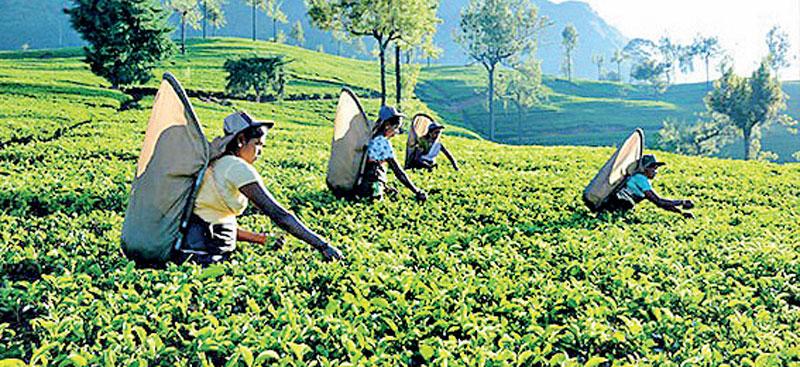13 Dec 2021 - {{hitsCtrl.values.hits}}

Sri Lanka’s plantation sector, which was once a dominant industry generating the lion’s share of exports income and economic value addition, is now confronted with a bevy of issues threatening its long-term viability, but untangling those require a large amount of capital, which only a handful could afford, the rating agency, ICRA Lanka Limited pointed out.
According to a comprehensive study carried out on the country’s plantation sector dominated by tea and rubber, and on what brought the industry to its current sorry state, the rating agency cited a slew of issues, some of which are of the industry’s and the governments’ own making.
The rating agency cited highly volatile tea and rubber prices, their high susceptibility to the vagaries of the weather, lower crops due to the failure to invest in re-planting, dearth of labour, which adversely affect the productivity and the haphazard policy changes brought in by the governments from time-to-time, often with no scientific basic, as the five key causes which held back the industry in the last couple of decades. “Facing up to these challenges are daunting”, ICRA Lanka opined.
“In addition, the long-term viability of the plantation industry hinges on the need to make investments in upgrading assets, acquiring technology, and changing business models,” the rating agency added, recommending the way out. According to the authors of the study who parsed multiple sources of data to arrive at their conclusions, these issues have resulted in declining in production and market share over the decade which in turn led to meagre profitability, and in fact caused losses in most companies during the past decades with the exception of calendar year 2021(CY2021).
Although CY2021 became an outlier due to the rising global demand for tea together with the supply disruptions experienced by major tea producing nations such as India and China, which pushed prices for tea and rubber to their peaks, only a handful of Regional Plantation Companies (RPCs) managed to remain highly profitable while at least 25 percent of the companies were constantly making losses in the last decade.
“From CY2015 to CY2020, with the exception of CY2017, around 50 percent of the RPCs were making losses. Losses in CY2019 and CY2020 were substantial as seen from the augmented negative ROEs (as high as 80 percent among some RPCs),” the rating agency said. Meanwhile, the median industry net profit margin has hovered around a meager 3 to 4 percent in most years, begging the question whether the industry has the wherewithal to bring in the capital required for the reset needed, which typically has longer gestation periods for results.
“Regrettably, as it stands, only few RPCs have the ability and the financial strength to commit to a credible plan to transition out from the current state of affairs,” the authors of the study commented. Sri Lanka’s growth in tea production during the last two decades have remained more or less flat while the its key competitors such as China, India and Kenya have grown by around 8 percent, 3 percent and 2 percent, receptively.
This led to the dramatic loss of global market share of tea by Sri Lanka which slumped from an over 20 percent in the decade starting from 1960 before the nationalisation of the industry to just below 9 percent in 2001 to an alarming 5 percent in 2019.
In this backdrop, the rating agency recommended key strategies for the industry, which include replanting, factory upgrade, mechanisation and diversification to emerge out of the current downfall. The report pointed out that some RPCs have already expanded their portfolio into less labour intensive crops that offer price stability such as cinnamon, pepper etc. to reduce their reliance on scarce labour.
It also mentioned a few cases where plantation companies had got into tourism by promoting eco, natural and tea tourism while some investing in renewable energy such as solar and hydro energy production to lessen their reliance on conventional crops alone.
However, ICRA Lanka said these strategic pivots and replanting requires consistent stream of annual investments spanning across five to ten years. But the past record of consistently high capital investments by the RPCs through their internal capital generation, via their parent companies and borrowings has been dismal, or at least less than satisfactory.
“In the last 10-year period, the industry’s annual aggregate capital expenditure peaked to Rs. 4.3 billion in 2014 before gradually declining to about Rs. 3.0 billion by 2020,” the report noted.
16 Nov 2024 4 hours ago
16 Nov 2024 4 hours ago
16 Nov 2024 5 hours ago
16 Nov 2024 5 hours ago
16 Nov 2024 7 hours ago